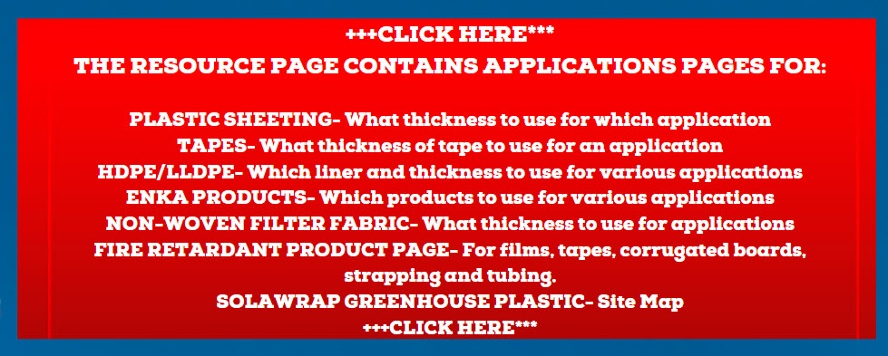Waste- Landfills for Solid and Hazardous Waste
Waste landfills for solid and hazardous waste come in several varieties

The purpose of a landfill is to contain all the waste that will be deposited within its confines. The EPA regulates these facilities to insure proper care is taken to preserve the environment.
-
Construction and Demolition Landfills (C&D):
Landfills that collect Construction and Demolition debris- also called, C & D landfills. To protect the soil, groundwater and surface water from contamination, HDPE liners and PVC liners are used to contain this debris in a landfill.
A construction and demolition (C&D) landfill is a specialized type of landfill designed to handle waste generated from construction, renovation, and demolition activities. These landfills are designated for the disposal of non-hazardous materials resulting from the construction and demolition of buildings, roads, bridges, and other structures. C&D landfills play a crucial role in managing the large volume of debris and waste generated by construction projects.
Key characteristics of construction and demolition landfills include:
-
Waste Types: C&D landfills accept various types of non-hazardous construction and demolition debris, including concrete, wood, metals, bricks, asphalt, drywall, glass, plastics, and other building materials.
-
Segregation: Waste materials in C&D landfills are often segregated into different areas based on their characteristics and potential for recycling or reuse.
-
Regulations: C&D landfills are subject to strict regulations to ensure proper waste disposal and environmental protection. These regulations may vary by location and are aimed at preventing contamination of groundwater and soil.
-
Heavy Equipment: Due to the nature of the waste, C&D landfills often use heavy machinery, such as bulldozers and excavators, to manage and compact the debris.
-
Landfill Lifespan: The lifespan of a construction and demolition landfill depends on factors such as the volume of waste received, recycling efforts, and the landfill's capacity.
-
Recycling Efforts: Many C&D landfills encourage recycling and have facilities on-site to recover and reuse materials like concrete, metal, and wood, reducing the overall volume of waste.
-
Environmental Considerations: Proper landfill design and management practices are employed to minimize potential environmental impacts, such as leachate and methane gas generation.
It's important to note that construction and demolition landfills should not be used for disposing of hazardous waste, such as asbestos, lead-based paint, or chemicals. Hazardous materials require specialized handling and disposal procedures to ensure public safety and environmental protection.
Overall, construction and demolition landfills provide an essential waste management solution for the massive amounts of debris generated during construction and demolition activities, while also promoting responsible waste handling and recycling practices.
Product suitable for use for landfills include: HDPE (Click here) and PVC liners- (click here)
-
Solid Waste Landfills
Solid waste landfills are designed to protect the environment from contaminants that may be present in the solid waste stream. These landfills collect household waste of the non-hazardous type. HDPE (Click here) and PVC liners- (click here) will protect the environment and hold up under harsh conditions.
Solid waste landfills, commonly known as landfills, are engineered disposal sites designed to handle and manage non-hazardous solid waste generated by households, businesses, industries, and institutions. These landfills are an essential component of waste management systems and are used to dispose of materials that cannot be recycled, composted, or otherwise reused.
Key features and characteristics of solid waste landfills include:
-
Waste Types: Solid waste landfills accept various non-hazardous materials, such as municipal solid waste (MSW), household waste, commercial waste, and industrial waste. These can include items like food scraps, plastics, paper, cardboard, textiles, and other non-recyclable materials.
-
Liner Systems: Landfills are equipped with liner systems made of clay, synthetic materials (e.g., geomembranes), or a combination of both to prevent leachate (liquids produced as waste breaks down) from contaminating the surrounding soil and groundwater.
-
Waste Compaction: As waste is deposited into the landfill, it is compacted to reduce its volume and create more space for additional waste.
-
Landfill Cells: Landfills are divided into cells or sections where waste is deposited and compacted. Once a cell is filled to capacity, it is covered with soil and/or other materials to limit odor, prevent littering, and control pests.
-
Methane Gas Collection: As waste decomposes, it generates methane gas, a potent greenhouse gas. Many modern landfills have systems in place to collect and safely manage methane, either for flaring or for use as an energy source.
-
Environmental Monitoring: Landfills are subject to rigorous monitoring to ensure compliance with environmental regulations. Monitoring includes evaluating leachate levels, gas emissions, and potential impacts on groundwater quality.
-
Recycling and Waste Diversion: While landfills are used for materials that cannot be recycled or diverted, many landfill facilities also incorporate recycling centers or diversion programs to reduce the amount of waste going into the landfill.
-
Final Cover: Once a landfill reaches its capacity and is no longer in use, it undergoes closure procedures, which include the installation of a final cover to help control erosion, prevent water infiltration, and promote long-term environmental stability.
It's crucial to note that solid waste landfills are distinct from hazardous waste landfills, which are specially designed and regulated to handle hazardous materials, including chemicals, toxic substances, and other dangerous waste products. Proper waste management practices, such as reducing waste generation, recycling, and composting, are essential to complement the role of solid waste landfills in overall waste management strategies and promote environmental sustainability.
-
Hazardous Waste Landfills
Hazardous waste landfills are treatment, storage and disposal facilities that accept hazardous waste. GPS HDPE (Click here) , and PVC liners- (click here) are well suited for this application.
Hazardous waste landfills are highly specialized disposal facilities designed specifically to handle and isolate hazardous waste materials. Unlike solid waste landfills, hazardous waste landfills are engineered to prevent the migration and release of hazardous substances into the environment, thereby protecting human health and the surrounding ecosystems.
Key features and characteristics of hazardous waste landfills include:
-
Waste Types: Hazardous waste landfills exclusively accept hazardous materials, which can include various toxic, flammable, corrosive, and reactive substances generated by industrial processes, chemical manufacturing, healthcare facilities, and other sources.
-
Liner Systems: Hazardous waste landfills have multiple layers of protective liners made of clay and synthetic materials (such as high-density polyethylene or geomembranes) to prevent hazardous chemicals and leachate from seeping into the soil and contaminating groundwater.
-
Leachate Collection and Treatment: Leachate, a liquid that results from the decomposition and breakdown of hazardous waste, is carefully collected within the landfill and treated to remove hazardous contaminants before proper disposal.
-
Waste Stabilization: Prior to disposal, hazardous waste may undergo treatment to stabilize it and reduce its toxicity, making it safer for long-term storage.
-
Gas Management: Hazardous waste decomposition produces potentially harmful gases, including volatile organic compounds and hazardous air pollutants. Landfills have gas collection and management systems to capture and control these emissions.
-
Environmental Monitoring: Hazardous waste landfills are subject to extensive environmental monitoring, including groundwater sampling and analysis, to ensure that hazardous substances do not escape into the surrounding environment.
-
Security and Access Control: Hazardous waste landfills have strict security measures to prevent unauthorized access and protect the public from potential hazards.
-
Long-Term Care and Maintenance: Hazardous waste landfills require ongoing maintenance and monitoring even after they are closed to ensure continued environmental protection.
It's important to note that hazardous waste landfills are subject to stringent regulations and oversight by government agencies to ensure compliance with safety and environmental standards. The selection of suitable sites, proper engineering design, and adherence to waste classification guidelines are essential in establishing and operating hazardous waste landfills effectively and responsibly. Moreover, hazardous waste management should prioritize waste minimization, recycling, and proper treatment before disposal to reduce the overall volume of hazardous waste and mitigate environmental impacts.
HDPE is Fun To Talk About....Reach out if you have a question or comment :)
By Phone Toll Free In the U.S. 866 597 9298
By Phone directly: 760 597 9298
By Fax: 760 597 9574
THANK YOU!
Do you have a quick question? Please ask it below. Thanks!!!!





